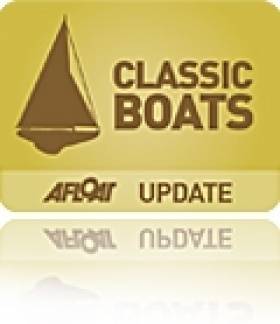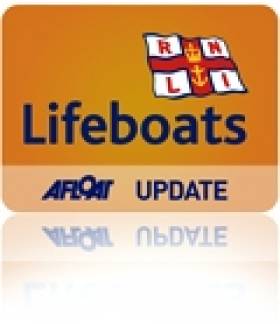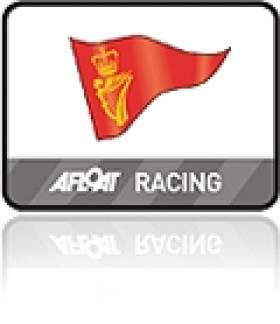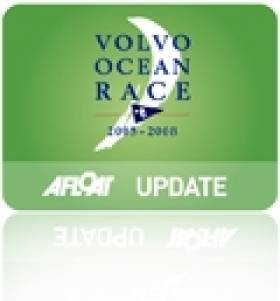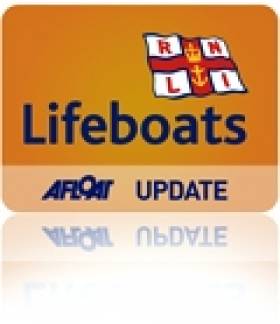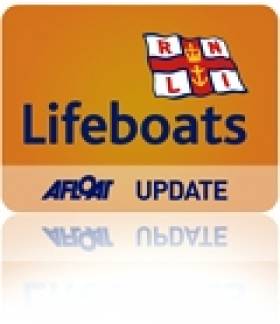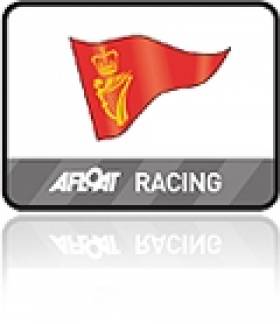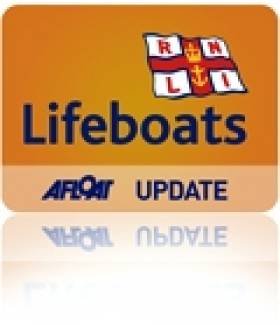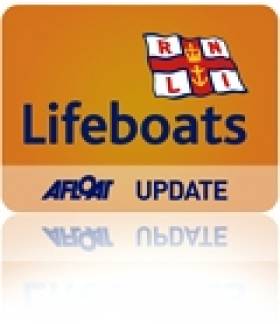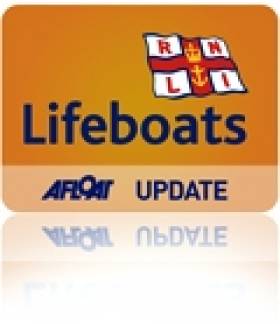Displaying items by tag: Crosshaven
#classicboats – A buoyant 65 entries graced Crosshaven's 20th anniversary Classic boats festival in Cork Harbour at the weekend. Boats ranging in size from Graham Bailey's 65–ft Sailing Luger 'Peel Castle', to Conor English's locally built 8 ft Rankin marked its significant birthday with a weekend programme of events on land and sea.
Brian Martin's recently restored gaff rigged cutter 1968 'Gillymoth' and Pat Dorgans Cork Harbour One design 'Elise' enjoyed the champagne sailing conditions on both days with a warm westerly breeze. Race officer Hugh Cassidy took full advantage of setting an inner Cork harbour course.
A number of boats came from outside the harbour including Cormac Levis's Saoirse Muireann from Ballydehob and Joanna Mary from Rosslare.
Ashore the pubs and restaurants in the village had sailing themes, costumes and food.
The gala fireworks on Saturday night were a huge success for the 20th celebrations.
Minister for the Marine Simon Coveney presented prizes on Sunday evening.






Crosshaven Lifeboat Rescues Teens From Homemade Raft
#RNLI - Six teenagers have been rescued by Crosshaven RNLI this morning (Tuesday 16 June) after a member of the public spotted them in the water and raised the alarm.
The volunteer lifeboat crew was requested to launch their inshore lifeboat at 6.10am following a report from the Irish Coast Guard that six teenagers, three male and three female, were on a homemade raft half a mile east of Crosshaven.
Weather conditions at the time were described as good but the tide was changing and going out rapidly.
The lifeboat, helmed by Gary Heslin and with crew members Vincent Fleming and Aoife Dinan onboard, was launched at 6.15am and was on scene three minutes later. The crew observed five teenagers on the raft while another was in the water trying to pull the raft ashore using a rope.
The crew proceeded to take the six – one of whom was cold – onboard the lifeboat and transport them safely back to Crosshaven Harbour where they were made comfortable in the lifeboat station.
"Time was of the essence this morning and we have to thank the vigilant member of the public who spotted the group and raised the alarm," said Heslin after the callout.
"While weather conditions were good the tide was starting to turn pretty fast and was pushing the group out to sea. Thankfully, all are now returned to shore and are safe and well.
"We would encourage anyone taking to the water this summer to always be mindful of tides and weather conditions and always carry a means of communications in case you find yourself in any difficulty."
Laser Ace Séafra Guilfoyle wins Royal Cork PY 500
#py500 – Séafra Guilfoyle has won the Royal Cork Yacht Club's PY 500 dinghy prize this afternoon. Only 8 seconds separated 3 dinghy classes at the finish writes Claire Bateman.
Saturday March 14 was the due date for the second annual PY 500 race at the Royal Cork Yacht Club. Well, what a story. The morning dawned with a beautiful blue sky and wonderful reflections in the clear water but alas and alack not a hint of a breeze could be felt and Race Officer Nathan Kirwan had no option but to postpone racing. As the race was to be held in the river, it was hoped to have a start an hour before high water but it was not to be. 'Experts' scanned the skies and ascertained that what clouds were there were moving slightly from the east. And so, when the light fickle breeze did fill in at 11.45am a windward/leeward course was set starting from the club marina with instructions for all boats to sail three rounds.
With a prize fund of €500 for the lucky winner and the ebb tide starting to flow more strongly the competitors were somewhat over eager and a general recall was necessary for the first start but all boats got away cleanly on the second attempt. The race had attracted an excellent entry of 38 but with the light wind morning this was whittled down to 32, still an excellent number. There was a great variety of craft on the water heading for the first mark ranging from National 18's, RS 400's, Lasers full rig, Laser Radials and Lasers 4.7, Toppers, an International 14, a 29er, a Pico, a Laser Stratos, a Finn and a brave Mirror and they all rounded the first mark without any incidents. They completed three rounds of the course and great concentration was needed in the light wind sailing but it proved to be a very enjoyable event resulting in only minor shouting between the competitors
When the results were calculated using the Portsmouth Yardstick only eight seconds separated the first three boats and indeed only three seconds separated the first two boats. Séafre Guilfoyle in a Laser full rig was the popular winner followed by a National 18 sailed by Nicholas O'Leary crewed by Michael O'Brien and Alex O'Connell, in second place and David Kenefick crewed by Grattan Roberts in an RS400 third .
Given the tightness of the results, one wonders what would have been the final placings if the two leading National 18's hadn't decide to concentrate between themselves on having a luffing match approaching the leeward mark in round 2, and who can tell whether or not this was where the vital three seconds between first and second place was lost. Neither they nor we will ever know for sure!
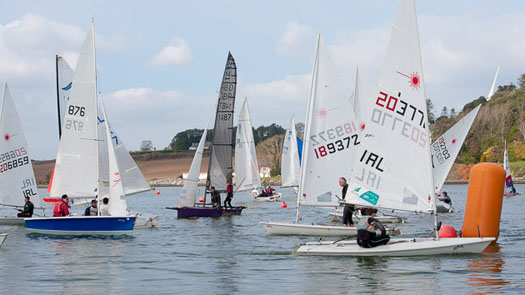
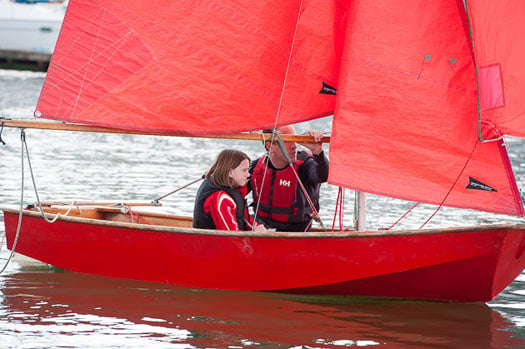
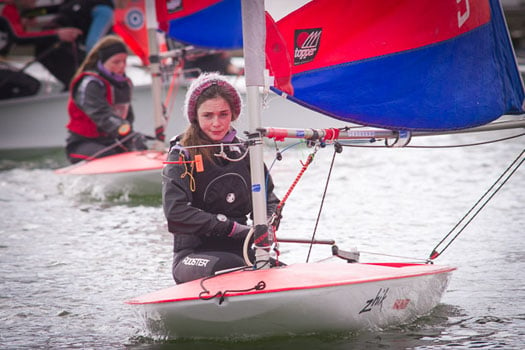
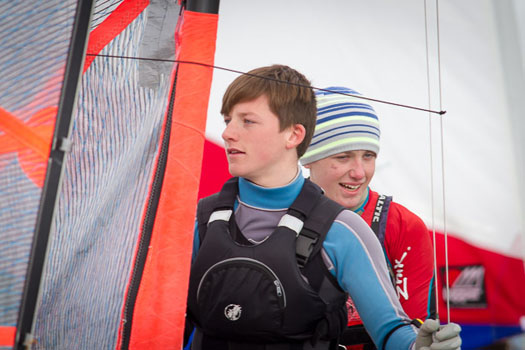
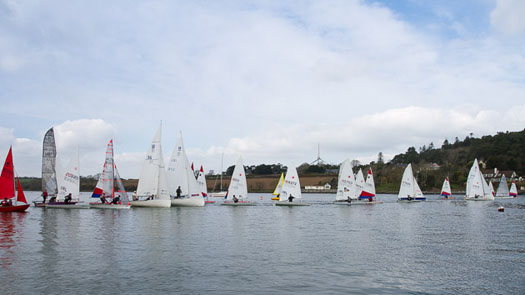
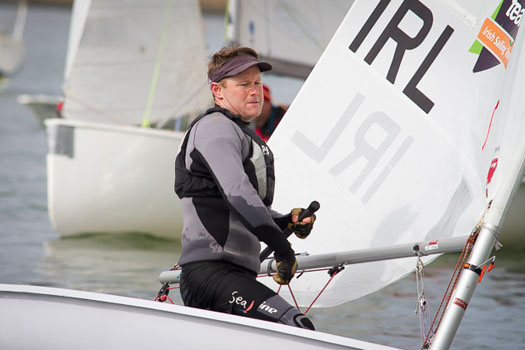
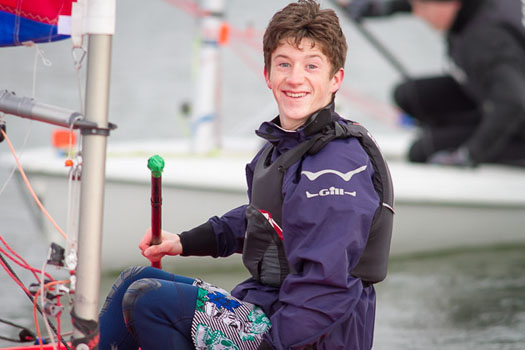
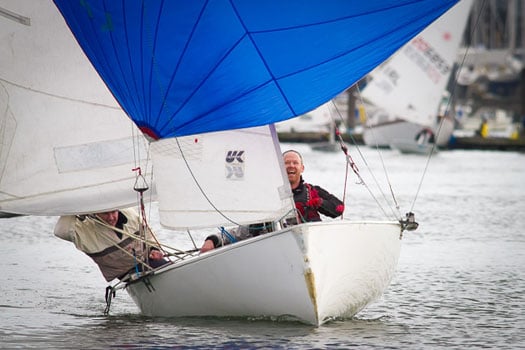
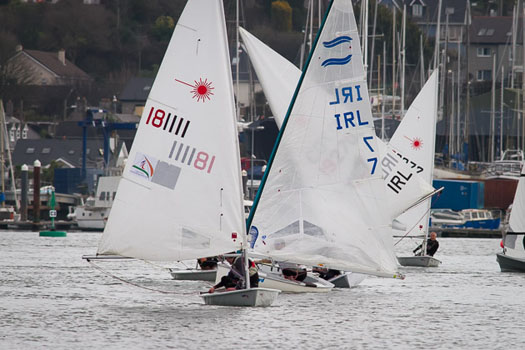
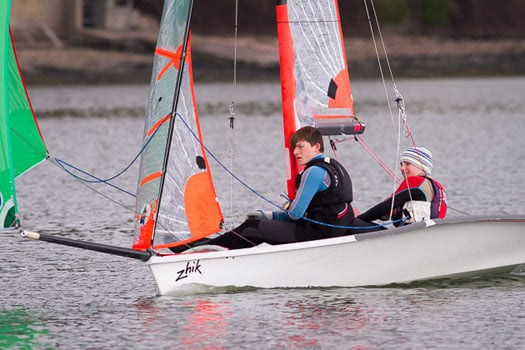
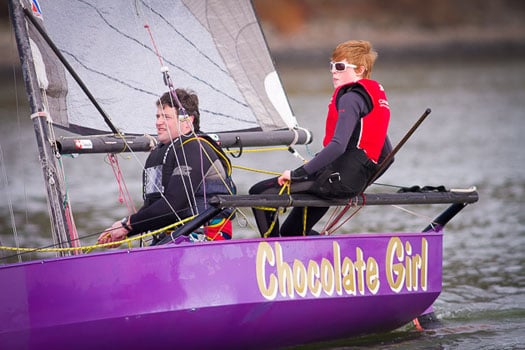
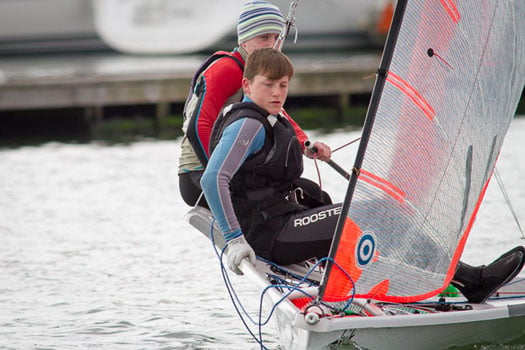
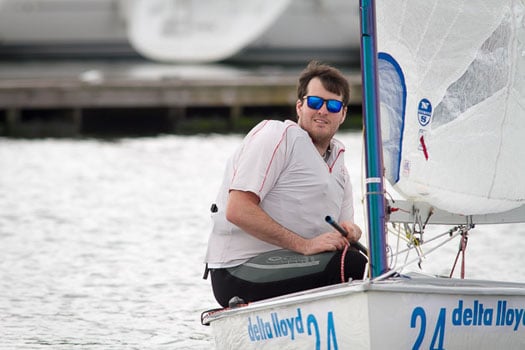
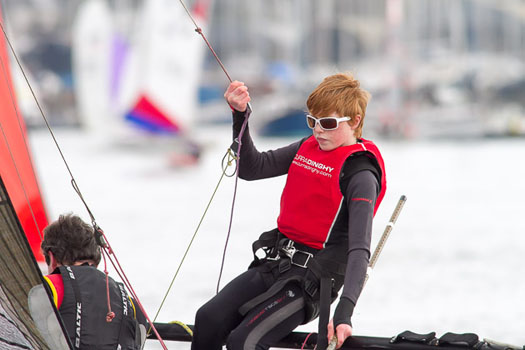

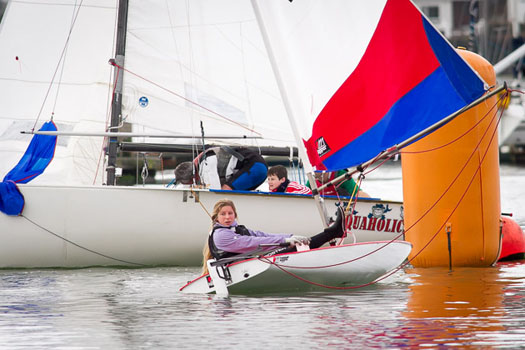
Dubarry 'Crosshaven' Was Born at Sea Onboard Ireland's Green Dragon
#dubarry – During their gruelling experiences throughout the Volvo Ocean Race 2008/9, the crew of the Irish entry, Green Dragon, had modified a 'workshop enhanced' version of Dubarry's existing performance sailing boot 'Fastnet' by adding a fairly crude, improvised integral gaiter. On their return to Galway, Green Dragon crew members Ian Walker, Neal McDonald and Damian Foxall, along with key onshore support personnel, met with the Dubarry Design and Engineering team led by Design Director Brian Geraghty. Their 'enhanced' boot was the subject of extensive examination and discussions that enabled Dubarry to garner a very detailed understanding of what sailors demand when working in the most extreme conditions imaginable. It was from these meetings with those that know, love and respect the ocean that the Crosshaven concept was conceived.
Crosshaven's most striking feature is the integral gaiter. It is made with a lightweight, high abrasion, water repellant fabric with an adjustable draw-cord collar that secures foul weather gear and prevents wash back. It also houses a drainage mesh for optimal water release and features high-visibility bands. It is thermally insulated, utilising a 350g GORE-TEX® Duratherm membrane for extra warmth and waterproofness, combined with a thermally-lined footbed, which provides the boot with full insulation. Reinforced toe and heel parts utilise Dubarry's unique D-Chassis System. This two-part foot support system is inspired by Formula 1 racing technology and uses a moulded RPU frame that minimizes heel pronation by adding extra support, protection and control.
Crosshaven also has finger pulls for easy foot entry and ExtraFit™ sizing. The inner leg is constructed of Dubarry's DryFast-DrySoft™ leathers and Cordura®. These features, combined with our award-winning NonSlip-NonMarking™ durable outsole, make this a very special, ultra high-performance sailing boot indeed.
Crosshaven has gone on to become the sailing boot of choice for top crews across the globe, including Team Telefonica and Abu Dhabi Ocean Racing in VOR 2011/12, and is currently at sea in the 2014/15 race on a number of boats including Team Brunel.
Crosshaven Lifeboat Assists Two Fishermen On Disabled Trawler
#RNLI - Crosshaven RNLI assisted two fishermen yesterday morning (Wednesday 17 September) after their trawler got into difficulty off the Cork coast.
The Cork Harbour volunteer crew was alerted at 11.48am to a report of a fishing vessel with two people on board that was disabled with a line on its propeller.
Launching their inshore lifeboat immediately, the volunteers quickly approached the scene where conditions were blowing an easterly Force 5 wind with a two-metre swell.
The trawler was quickly located near Fish Point and a tow established by the lifeboat crew before the vessel was taken safely to Crosshaven.
Crosshaven RNLI Lifeboat In Search for RIB in Collision with Navigation Buoy
rnli – Two men had a very narrow escape yesterday evening ( Saturday 6 Sept ) when their Rigid Inflatable Boat (RIB) collided with a navigation buoy near the Spit lighthouse and threw them from the boat into the water.
Crosshaven Lifeboat was paged at 10.40pm along with Rescue helicopter 117, Gyleen & Crosshaven Coast Guard, the Cork harbour Pilot launch and the ambulance service after a report of a RIB aground with the engine running near the Titanic Bar in Cobh and with no occupants onboard.
Crosshaven lifeboat under Helm Alan Venner with James Fagan and Harry O'Rourke commenced a creeping search from Spike Island. Further information then revealed the Gardai had located the two occupants ashore, shocked and suffering the effects of mild hypothermia. The two persons were handed into the care of the ambulance service
Crosshaven lifeboat along with the Crosshaven Coast Guard boat recovered the damaged Rib and towed it back to the lifeboat station.
Commenting on the incident, Patsy Fagen, Deputy Launch Authority at Crosshaven said "Thankfully, this service ended with a good result, but could quite easily have resulted in fatalities. We urge all leisure boat users to get trained and always use a kill cord when driving powered vessels".
#rcyc – Once again Royal Cork Yacht Club is very proud to welcome back the prestigious sponsorship of the MSL Motor Group for the annual At Home Regatta weekend writes Claire Bateman. The club is looking particularly resplendent with the latest Mercedes models on display and with the Mercedes flags and colourful bunting throughout the grounds there is a particularly festive atmosphere around. The At Home weekend is one of the highlights of the year at the Royal Cork Yacht Club when members and their families gather to renew old acquaintances, meet new friends and simply to enjoy a great weekend.
All ten of the National 18s were sailing for the South Coast Championship and as usual they were going hell for leather with no quarter sought nor given. Over twenty cruisers including 1,2,3 and whitesail got in a great day of racing. While in the dinghy fleets there were four Fevas, five Toppers, five Lasers and more Optimists than one could count.
Prior to racing proper some of the younger sailors were brought out for practice in the river and given the wind strength they sailed with reefed sails, not a thing one would see very often. However, the highlight was to see the two Topaz dinghies named 'Christine' and 'Spellbound', so generously donated to the Club by Dr. Raymond Fielding, standing out in their performance ahead of the dinghy fleet.
Racing will continue tomorrow (Sun) and no doubt there will be a scramble ashore after racing to partake of the programme of festivity and to enjoy the usual scrumptious afternoon tea kindly organized by the Admiral's Lady Ann, and her band of willing helpers.
Crosshaven RNLI Lifeboat Searches for Missing Power boat
#corkharbour – A major rescue operation swung into action early yesterday after reports of a speedboat crashing into a channel marker buoy en route from Cork city to Crosshaven.
Crosshaven lifeboat were paged at 45 minutes past midnight yesterday morning (23 August) to the incident in the lower part of Lough Mahon after the report of a boat with one person on board, and missing, after colliding with a navigation buoy. Along with the Crosshaven Coast Guard Boat, the Pilot launch Failte, Helicopter 117 and with Coast Guard shore teams, the area was extensively searched. The casualty boat along with its slightly injured owner were eventually located at a marina in Crosshaven.
All teams were stood down shortly before 3.30 am this morning.
Crosshaven lifeboat was recovered, refueled and ready for service at 4am. Crew on this service were Helm Ian Venner along with Vince Fleming and Kieran Coniry
Crosshaven Lifeboat Joins Major Search For Missing Speedboat
#RNLI - A major rescue operation swung into action early this morning after reports of a speedboat crashing into a channel marker buoy in Cork Harbour en route from Cork city to Crosshaven.
Crosshaven's volunteer lifeboat crew were paged at 45 minutes past midnight to the incident in the lower part of Lough Mahon after the report of a boat with one person on board believed missing after the collision with a navigation buoy.
The area was extensively searched by Crosshaven RNLI along with the Crosshaven Coast Guard boat, the pilot launch Fáilte, Irish Coast Guard helicopter Rescue 117 and coastguard shore teams.
The casualty boat along with its slightly injured owner were eventually located at a marina in Crosshaven. All teams were stood down shortly before 3.30am this morning.
Crosshaven's lifeboat crew on this service were helm Ian Venner, Vince Fleming and Kieran Coniry.
Newlyweds' Surprise Gift To Crosshaven Lifeboat
#RNLI - In a first for Crosshaven RNLI, the volunteer crew welcomed newly married couple Kieran Geasley and Patricia Lenihan to the Cork Harbour lifeboat station.
Geasley, a commercial fishing skipper from Cobh and a former RNLI volunteer at Dunmore East, and Lenihan, from Carrigaline, wanted to make a donation to the RNLI instead of putting wedding favours on the tables at their reception.
Lifeboat helm Kieran Coniry, along with fellow crew Ian O’Keefe and Catherine Levis, welcomed the couple to the station with the traditional bottle of champagne and thanked them on behalf of the RNLI for their generous donation, wishing them a lifetime of happiness together.
In other recent lifeboat news, Rosslare Harbour RNLI volunteers launched their all-weather lifeboat on Friday evening (18 July) to go to the aid of an 8m yacht with a broken rudder.
The yacht was bound for the south coast and was about 1.5 miles north of Rosslare Harbour. Visibility at the time was poor due to sea fog and the wind was a south-easterly Force 3 to 4.
The yacht, which was crewed by a father and his young son, was taken under tow by the lifeboat into the safety of Rosslare Europort.


























